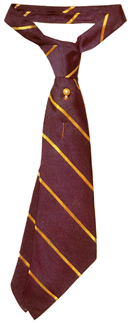Collars and Ties
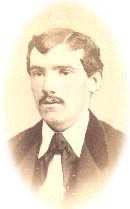
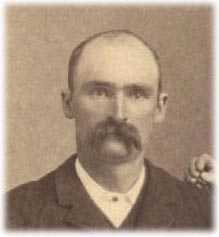 The man on the left is wearing the ever popular black string bow tie, made from a black silk ribbon, about an inch high and a yard long. This image is probably from the 1870s.
The man on the left is wearing the ever popular black string bow tie, made from a black silk ribbon, about an inch high and a yard long. This image is probably from the 1870s.
The fellow on the right has no tie, but his collar is closed with a stud. Men without ties are very common in 19th Century American photos -- sometimes with heavily starched shirts, nice suits and all the paraphernalia of proper attire. This is an interesting phenomenon that attests to a general lack of a standard of what constituted "proper attire" in 19th Century America. This image probably dates from the 1880s. Also of note is his rather limp and ungroomed mustache, which contrasts sharply with the wonderfully sculpted facial hair on the next gent in this series.
The fellow on the left, with his splendid mustache may be my favorite image from this collection. He is wearing a Windsor tie with a nice big symmetrical knot and a tie pin stuck through at the proper place. Of particular interest (if you can stop looking at his mustache for a moment) is his collar, which is very low and banded. It looks like it is, in fact, the neck band of the shirt, which could take a detachable collar, but no such collar is attached. This image most probably dates from the 1880s, judging from his generally well-groomed look.
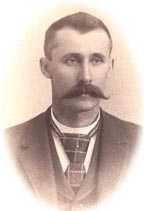
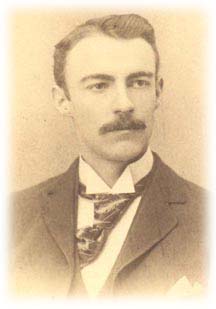
There is an interesting progression in men's styles. In the 1860s, almost every man in America looks like they slept in their clothes, and even major government officials appear in rumpled and stained clothing with unkempt stringy hair - and vests invariably have two or three buttons unbuttoned. About 1870, there is a change and men's styles become more and more about looking tidy and well groomed. Hair becomes shorter and nicely combed and oiled, facial hair becomes less effusive and more trimmed, vests get fully buttoned and clothing becomes better fitted and crisper. This continues until the turn of the Century, when collars become tall and stiff and clothing becomes so well fitted as to be quite constraining.
On the right side, this fine looking young man from the 1890s is wearing a Windsor tie, in patterned silk, tucked into one side after a fashion that seems to have been popular in the US in the late 19th Century (I have seen several examples of it). No tie pin is visible.
His collar is the winged style often called "Patricide", based on a fictitious story that a young man returned from university wearing the new style starched collar (new in the 1850s). When his father embraced him, the points on the collar cut his father's throat.
This, of course, never happened but the story was enough to name the collar. This style was frequently worn with frock suits, morning suits and evening wear (he seems to be wearing a morning suit). It was less often worn with sack suits.
Stiff collars were usually removable, so they could be washed and starched apart from the shirt, and thrown away when they became worn, while the shirt could remain in service for many years.
Removable collars were usually made of linen. Disposable paper and then celluloid collars came on the market at the end of the 19th Century.

